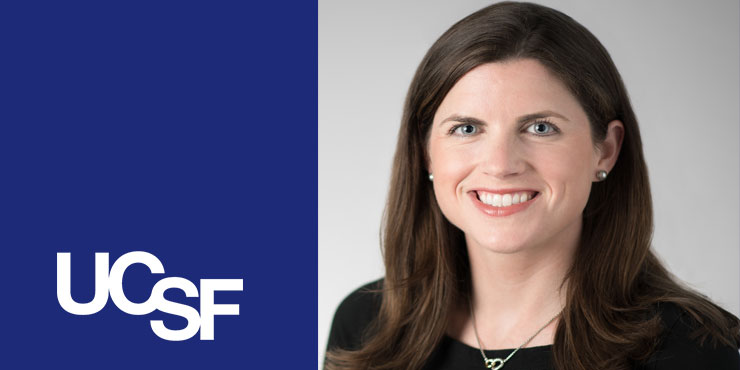Tina Knowles' Breast Cancer Diagnosis: The Importance Of Mammograms

Table of Contents
Tina Knowles' Experience: A Wake-Up Call for Women's Health
The Public Announcement and its Impact
Tina Knowles-Lawson's public disclosure of her breast cancer diagnosis had a profound impact, instantly raising awareness about this prevalent disease. Her courage in sharing her story resonated with millions, sparking crucial conversations about breast health and the importance of preventative care. The vulnerability she displayed helped normalize the experience of breast cancer, encouraging other women to seek help and open up about their own experiences.
The Power of Open Dialogue
Open and honest dialogue about breast cancer is crucial. Celebrities like Tina Knowles-Lawson play a vital role in breaking down stigmas and encouraging women to prioritize their health. Her story serves as a powerful example of the importance of:
- Seeking immediate medical attention: Don't delay seeking professional advice if you notice any changes in your breasts.
- Open communication with your healthcare provider: Maintain open lines of communication with your doctor to discuss any concerns or questions.
- Sharing your experience: Talking to friends, family, or support groups can provide emotional support and practical advice.
Understanding Mammograms: Your Best Defense Against Breast Cancer
What is a Mammogram?
A mammogram is a low-dose X-ray imaging technique used to detect breast cancer. It works by producing images of the breast tissue, allowing doctors to identify abnormalities such as lumps, calcifications, or other changes that might indicate cancer. Different types of mammograms exist, including:
- Digital mammograms: These produce high-resolution images, often easier to interpret than traditional film mammograms.
- 3D mammograms (tomosynthesis): This advanced technique provides a clearer view of breast tissue by creating multiple images from different angles.
The process involves a technician positioning your breast between two plates to compress it briefly while the X-ray is taken. While it might feel slightly uncomfortable, the procedure is relatively quick and painless.
Who Should Get a Mammogram?
The recommended age and frequency for mammograms vary based on individual risk factors. General guidelines suggest:
- Age 40-44: Women in this age group should have the option to start annual mammograms.
- Age 45-54: Women in this age group should get mammograms every year.
- Age 55 and older: Women 55 and older can switch to mammograms every two years, or continue yearly screenings.
However, these are just guidelines. Factors that influence mammogram recommendations include:
- Family history of breast cancer: A strong family history significantly increases risk.
- Genetic predispositions: Certain genetic mutations, such as BRCA1 and BRCA2, increase the likelihood of developing breast cancer.
- Personal history of breast cancer: Previous breast cancer diagnosis necessitates more frequent screenings.
Concerns about radiation exposure from mammograms are understandable. The radiation dose is minimal and the benefits of early detection far outweigh the risks.
Benefits of Early Detection through Mammography
Early detection through mammography dramatically improves survival rates. Statistics consistently show that women diagnosed with breast cancer at an early stage have a significantly higher chance of successful treatment and long-term survival. Early detection also allows for:
- Less invasive treatment options: Smaller tumors are often treatable with less extensive surgery, radiation, or chemotherapy.
- Improved quality of life: Early treatment minimizes the disruption to daily life and reduces the severity of potential side effects.
Beyond Mammograms: A Holistic Approach to Breast Health
Self-Breast Exams
Regular self-breast exams are an important addition to mammograms. Knowing how your breasts normally feel allows you to detect any unusual changes promptly. Many online resources and healthcare providers offer guidance on proper self-exam techniques. [Link to reliable resource on self-breast exams].
Healthy Lifestyle Choices
Maintaining a healthy lifestyle can reduce breast cancer risk. This involves:
- Diet: Consume a balanced diet rich in fruits, vegetables, and whole grains, while limiting red meat and processed foods.
- Exercise: Engage in regular physical activity to maintain a healthy weight and improve overall health.
- Avoiding smoking: Smoking significantly increases the risk of several cancers, including breast cancer.
Regular Check-ups with Your Doctor
Routine visits to your doctor are essential for preventative care and early detection. Open communication with your physician is vital, allowing you to discuss any concerns, family history, and personal risk factors.
Conclusion: Taking Control of Your Breast Health with Regular Mammograms
Regular mammograms are a cornerstone of breast cancer prevention. Tina Knowles-Lawson's story underscores the importance of early detection and proactive healthcare. By combining regular mammograms with self-breast exams, healthy lifestyle choices, and routine check-ups, you can significantly reduce your risk and improve your chances of successful treatment should breast cancer occur. Don't delay; schedule your annual mammogram today. Regular breast cancer screening is crucial for your health.

Featured Posts
-
 Stock Market Valuation Concerns Bof A Offers A Counterargument
Apr 24, 2025
Stock Market Valuation Concerns Bof A Offers A Counterargument
Apr 24, 2025 -
 5 Dos And Don Ts For Landing A Private Credit Job
Apr 24, 2025
5 Dos And Don Ts For Landing A Private Credit Job
Apr 24, 2025 -
 Why Pope Francis Ring Will Be Destroyed After His Death The Significance Of The Fishermans Ring
Apr 24, 2025
Why Pope Francis Ring Will Be Destroyed After His Death The Significance Of The Fishermans Ring
Apr 24, 2025 -
 Auto Dealers Five Point Plan Addresses Looming Us Canada Trade War
Apr 24, 2025
Auto Dealers Five Point Plan Addresses Looming Us Canada Trade War
Apr 24, 2025 -
 Herro Wins Thrilling Nba 3 Point Contest Beats Hield In Close Final
Apr 24, 2025
Herro Wins Thrilling Nba 3 Point Contest Beats Hield In Close Final
Apr 24, 2025
